Dione CubeSat
EO
NASA
Planned
Expected to launch in 2023, Dione is a NASA-led CubeSat dedicated to studying how Earth’s upper atmosphere reacts to the flow of solar energy into the magnetosphere. Dione will provide data to improve space weather forecasts to help satellites avoid early reentry.
Quick facts
Overview
| Mission type | EO |
| Agency | NASA |
| Mission status | Planned |
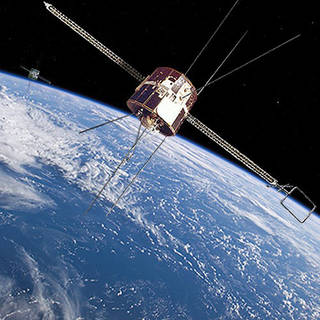
Summary
Mission Capabilities
Dione will carry an Ion-Neutral Mass Spectrometer (INMS) for in situ measurements of low-energy, neutral ions. INMS uses an electrostatic analyzer which employs an electric field to allow the passage of only those ions or electrons that have a given specific energy, and a Channel Electron Multiplier (CEM) or a Micro Channel Plate (MCP), both of which directly detect and amplify energetic photons and charged particles. Dual Electrostatic Analyzer (DESA) will directly measure a particular component of Earth’s electrical field generated in the ionosphere. Gridded Retarding Ion Distribution Sensor (GRIDS) is designed to measure the distribution, motion, and velocity of ions.
Performance Specifications
The data package includes 400 mass bins each for ions and neutral particles and key housekeeping data for instrument health and calibration. The data sampling can be commanded as fast as 10 ms/frame (corresponding to approximately 80 m spatial separation) in burst mode, and has significant onboard storage capability and data compression scheme. The target orbit is a high-inclination, circular low-Earth, polar orbit at an altitude of 400-600 km.
Space and Hardware Components
Dione is planning to use S-band through NASA’s Near Earth Network (NEN) to communicate with the spacecraft. Dione will also establish conjunction passes over key ground instrumentation, specifically auroral imagers and radars, and use conjunction observations to study theories of magnetosphere-ionosphere coupling. The spacecraft bus will comprise of several commercial off-the-shelf components from vendors such as Hyperion (star tracker and GPS receiver), Sensonor (IMU), GOMSpace (fine sun sensor and magnetometer), Sinclair Interplanetary (reaction wheels), Ibeos (EPS and batteries), and Vulcan Wireless (radio and antenna). The flight computer is being developed by NASA’s Goddard Space Flight Center (GSFC) along with the necessary interface boards.
Overview
The Dione mission is funded by the NASA Science Mission Directorate Heliophysics Division. The mission is a collaboration between NASA, Catholic University of America, Utah State University, and Virginia Polytechnic Institute and State University. Dione’s primary objective is to quantify how the ionosphere and thermosphere respond to electromagnetic and kinetic energy inputs from the magnetosphere. This energy input is a key parameter in all physics-based models of the Ionosphere-Thermosphere (IT) system and has long been identified as one of the parameters with the largest uncertainties. 3)
For the first time since the Dynamics Explorer-2 (DE2) mission, Dione will provide simultaneous measurements of energy input and IT responses. The energy inputs will be quantified as Poynting flux and electron fluxes, while the IT responses will be quantified as ion drifts and temperatures and neutral density and composition. Dione will provide in situ measurements and through its precession will sample all local times and latitudes and under various geomagnetic conditions. Dione will also establish conjunction passes over key ground instrumentation, specifically auroral imagers and radars, and use conjunction observations to study theories of magnetosphere-ionosphere coupling and IT heating.
NASA has selected a new pathfinding CubeSat mission to gather data not collected since the agency flew the Dynamics Explorer in the early 1980s. The new mission, called Dione after the ancient Greek goddess of the oracles, will carry four miniaturized instruments to study how Earth’s upper atmospheric layers react to the ever-changing flow of solar energy into the magnetosphere — the enveloping bubble of magnetic field around Earth that deflects most of the particles that erupt from the Sun. Earth’s upper atmosphere is where most low-Earth-orbiting satellites reside, and their orbits are strongly affected by sudden density changes created by space weather. 1) 2)
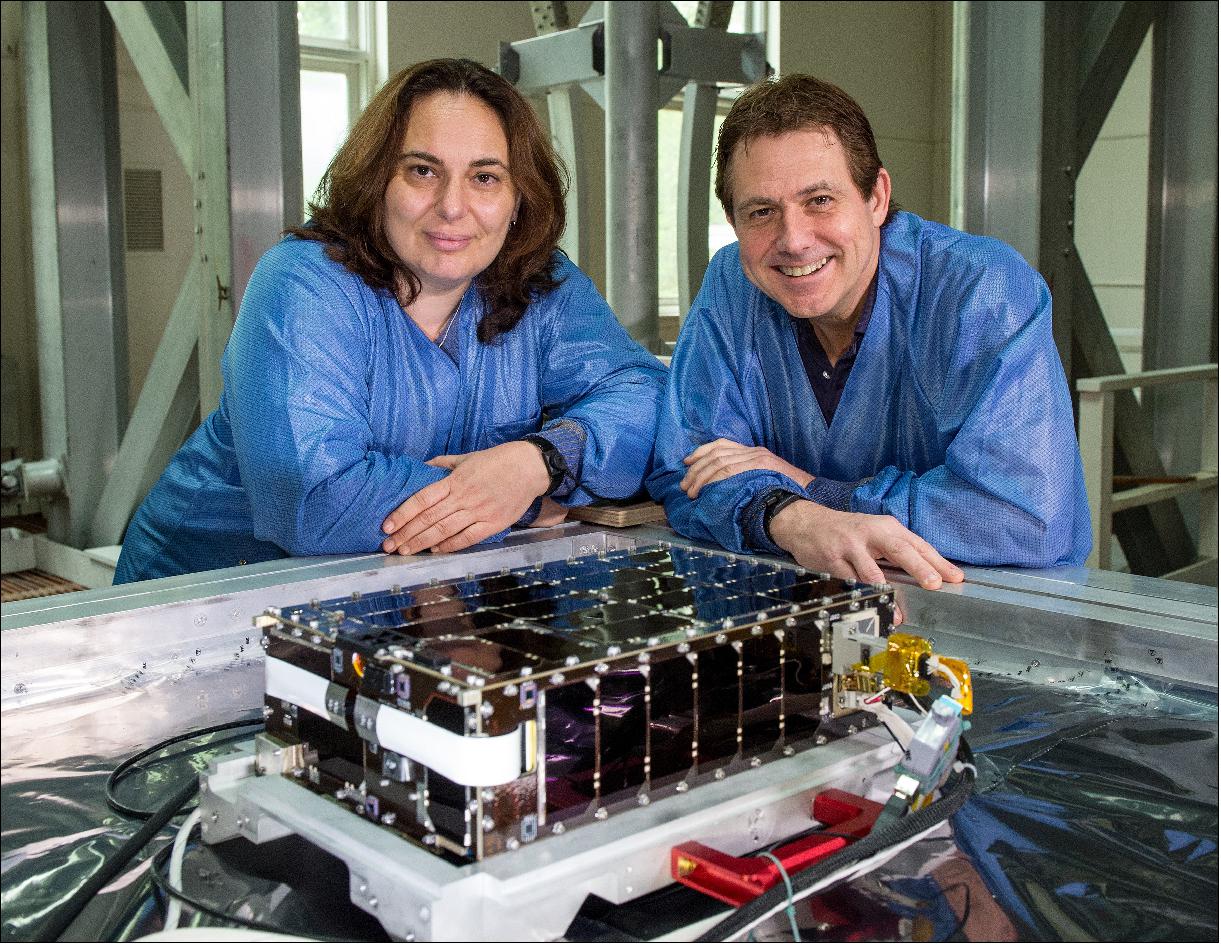
Expected to launch in 2023, Dione will give scientists insights into these physical processes — which contribute to atmospheric drag, a process that causes low-Earth-orbiting satellites to prematurely reenter the atmosphere — and provide data needed to improve space weather forecasts.
“As more aspects of everyday lives depend on the predictable functioning of satellites in low-Earth orbit, the understanding and ability to forecast the impact of space weather on these assets has become a national security need,” said the mission’s Principal Investigator, Eftyhia Zesta, a scientist at NASA/GSFC in Greenbelt, Maryland. “Measurements traditionally gathered by larger, more costly satellites must now be accomplished by thinking out of the box — or rather inside a CubeSat box. Dione will open the way for accomplishing exactly that.”
The pathfinding Dione spacecraft is a prototype. It would complement the conceptual Geospace Dynamics Constellation, a mission proposed by the 2013 Heliophysics Decadal Survey, which, if developed, would gather similar data from multiple similarly equipped spacecraft, Zesta said. “Our team wants to show we can do this type of measurement with a CubeSat and eventually fly Dione-type spacecraft in a constellation,” Zesta said.
With a constellation, scientists could collect simultaneous, multi-point observations of Earth’s ionosphere and thermosphere, to learn more particularly how these upper atmospheric layers respond to energy dumped from the magnetosphere.
The Dynamics Explorer Missions
Dione will provide the first set of energy input data and ionospheric-thermospheric data in more than three decades. “We haven’t gathered this type of specific data since NASA launched the Dynamics Explorer in August 1981,” said Zesta, whose team includes Deputy Principal Investigator Marilia Samara and Dione System Engineer Jaime Esper as well as a number of Goddard and university scientists providing the instruments. The Dynamics Explorer consisted of two satellites that investigated interactions between plasmas in the magnetosphere and those in Earth’s ionosphere.
However, Dione will accomplish these goals with distinct differences. Where the Dynamics Explorer (DE2) gathered data maybe once every three orbits, Dione will collect measurements from successive orbits due to Dione’s lower power requirements and miniaturized systems. It will also do this from a much smaller platform — a shoebox-sized, 6U platform that leverages experience gained from the Goddard-developed Dellingr spacecraft. A team of Goddard engineers and scientists specifically developed Dellingr to improve the reliability and robustness of these tiny spacecraft, but at a dramatically reduced cost. Dellingr launched in 2017.
Spacecraft
Dione has completed the instrument and mission Preliminary Design Reviews (PDR) and the team is working towards maturing its overall design. One of the primary challenges in this process is packaging the instrument suite within the 6U form factor. Dione will be able to take advantage of experience and test hardware established through petitSat and BurstCube mission developments as it heads into its integration and test campaign. Upon deployment, Dione is planning to use S-band through NASA’s Near Earth Network (NEN) to communicate with the spacecraft.
The pathfinding Dione spacecraft is a prototype. It would complement the conceptual Geospace Dynamics Constellation, a mission proposed by the 2013 Heliophysics Decadal Survey, which, if developed, would gather similar data from multiple similarly equipped spacecraft. With a constellation, scientists could collect simultaneous, multi-point observations of Earth’s ionosphere and thermosphere, to learn more particularly how these upper atmospheric layers respond to energy dumped from the magnetosphere.
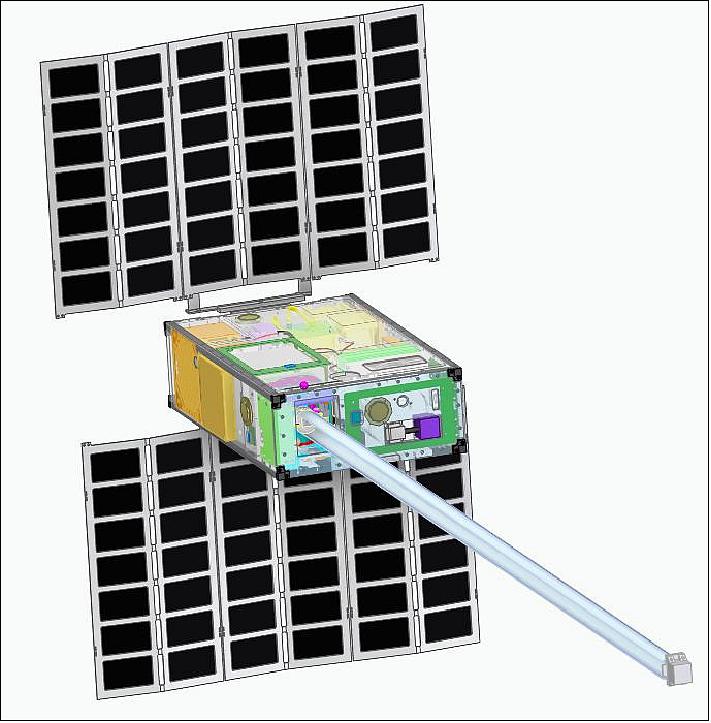
Launch
A launch of Dione is expected in 2023 and will be applying to the NASA CubeSat Launch Initiative (CSLI) program. The target orbit is a high-inclination, circular low-Earth, polar orbit at an altitude of 400-600 km. 3)
Sensor Complement
Three of the four instruments will be provided by GSFC. All were developed with funding from GSFC’s Internal Research and Development program and all have either flown or are slated to fly onboard other upcoming CubeSat or suborbital missions.
They include a flight-proven fluxgate magnetometer, which debuted on Dellingr’s maiden flight, and the Ion-Neutral Mass Spectrometer (INMS), another instrument that flew on Dellingr as well as on a National Science Foundation-funded mission called ExoCube. On both Dellingr and ExoCube, the INMS was slated to measure the matter that creates atmospheric drag on satellites. Goddard’s third contribution, the Dual Electrostatic Analyzer (DESA) will fly on Endurance, expected to launch in 2023, a pioneering mission that will directly measure a particular component of Earth’s electrical field generated in the ionosphere.
Utah State University and Virginia Tech are providing the fourth instrument, the Gridded Retarding Ion Distribution Sensor (GRIDS), which is designed to measure the distribution, motion, and velocity of ions and is flying onboard the Goddard-developed PetitSat mission launched in 2022.
Another GSFC technology demonstration called the Spacecraft Potential Sensor (SPS) will be used to understand Dione’s charging environment. The spacecraft bus will comprise of several commercial off-the-shelf components from vendors such as Hyperion (star tracker and GPS receiver), Sensonor (IMU), GOMSpace (fine sun sensor and magnetometer), Sinclair Interplanetary (reaction wheels), Ibeos (EPS and batteries), and Vulcan Wireless (radio and antenna). The flight computer is being developed by GSFC along with the necessary interface boards. Trades are ongoing with respect to incorporating articulating solar arrays in order to maximize science collection. The instruments and spacecraft will be integrated and tested at GSFC.
INMS (Ion-Neutral Mass Spectrometer)
There exists a strong need for in situ measurements of atmospheric neutral and ion composition and density, not only for studies of the dynamic ionosphere-thermosphere-mesosphere system but simply to define the steady state background atmospheric conditions.
The Heliophysics Division of GSFC has developed a compact INMS for in situ measurements of ions and neutrals hydrogen, helium, nitrogen, oxygen, dinitrogen, dioxygen with M/dM of approximately 12 at an incoming energy range of 0-50 eV. INMS uses an electrostatic analyzer which employs an electric field to allow the passage of only those ions or electrons that have a given specific energy, and a Channel Electron Multiplier (CEM) or a Micro Channel Plate (MCP), both of which directly detect and amplify energetic photons and charged particles.
The compact sensor has a dual symmetric configuration with the ion and neutral sensor heads on opposite sides and with full electronics in the middle. The neutral front end optics includes thermionic emission ionization and ion blocking grids, and the ion front end optics includes spacecraft potential compensation grids. The electronics include front end, fast gating, HVPS (High Voltage Power Supply), ionizer, TOF (Time of Flight) binning and full bi-directional command and data handling (C&DH) digital electronics. The data package includes 400 mass bins each for ions and neutrals and key housekeeping data for instrument health and calibration. The data sampling can be commanded as fast as 10 ms/frame (corresponding to approximately 80 m spatial separation) in burst mode, and has significant onboard storage capability and data compression scheme.4)
A demonstrator INMS was launched on The ExoCube 3U CubeSat mission (SMAP launch) on January 31, 2015. A second upgraded INMS was delivered in August 2015 to the Dellingr 6U CubeSat mission launched in 2017. This miniaturized instrument fills a 1.5U volume, weighs only 560 g and requires nominal power of 1.6W.
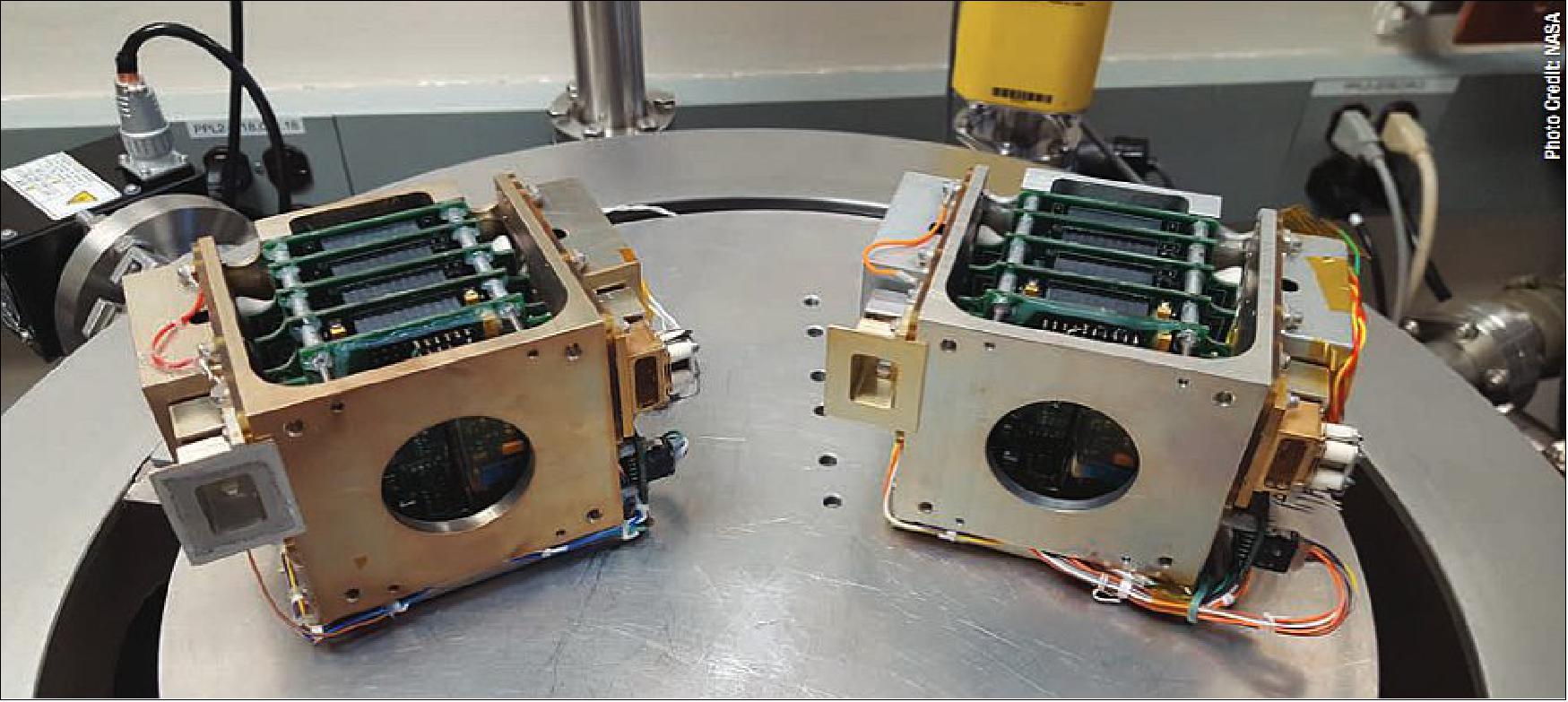
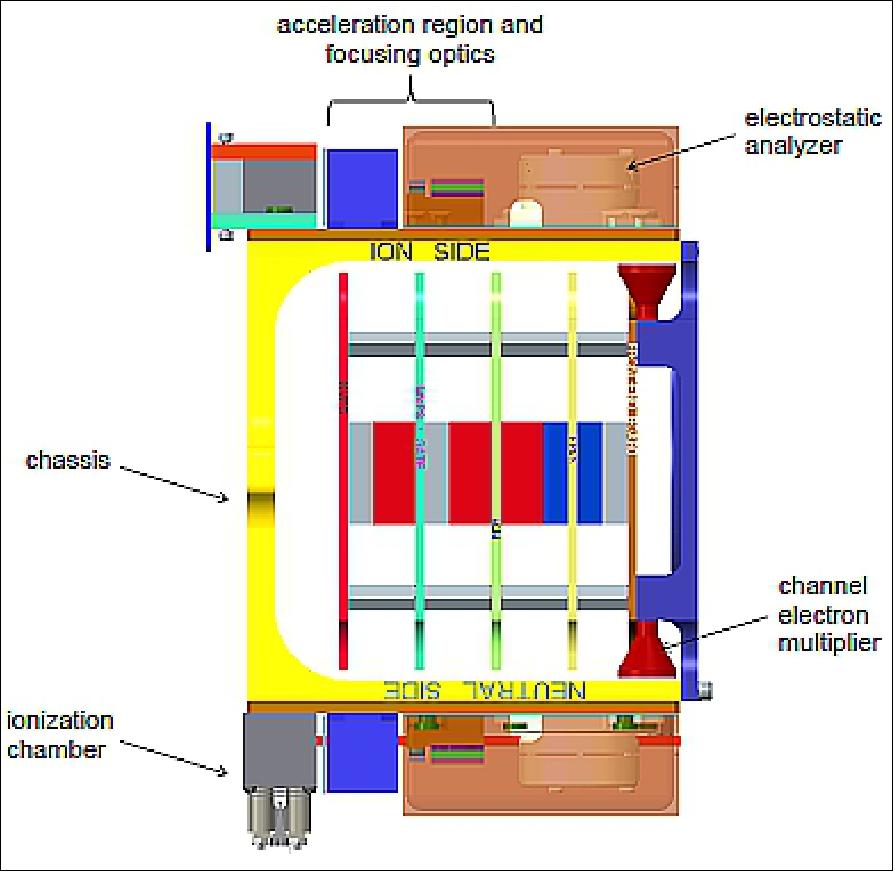
Measurements of atmospheric neutral and ion composition and density are needed not only for studies of the dynamic ionosphere-thermosphere-mesosphere system but simply to define the steady state background atmospheric conditions. Remote sensing measurements of atomic oxygen density at altitudes between 80-95 km have shown that the density can vary by over an order of magnitude. This causes deviations from the densities estimated by MSIS (a well known empirical model of Earth's atmosphere) by up to a factor of four. CubeSats provide an ideal platform for an ion/neutral mass spectrometer capable of obtaining the in situ measurements that are critical to understanding this complicated system.
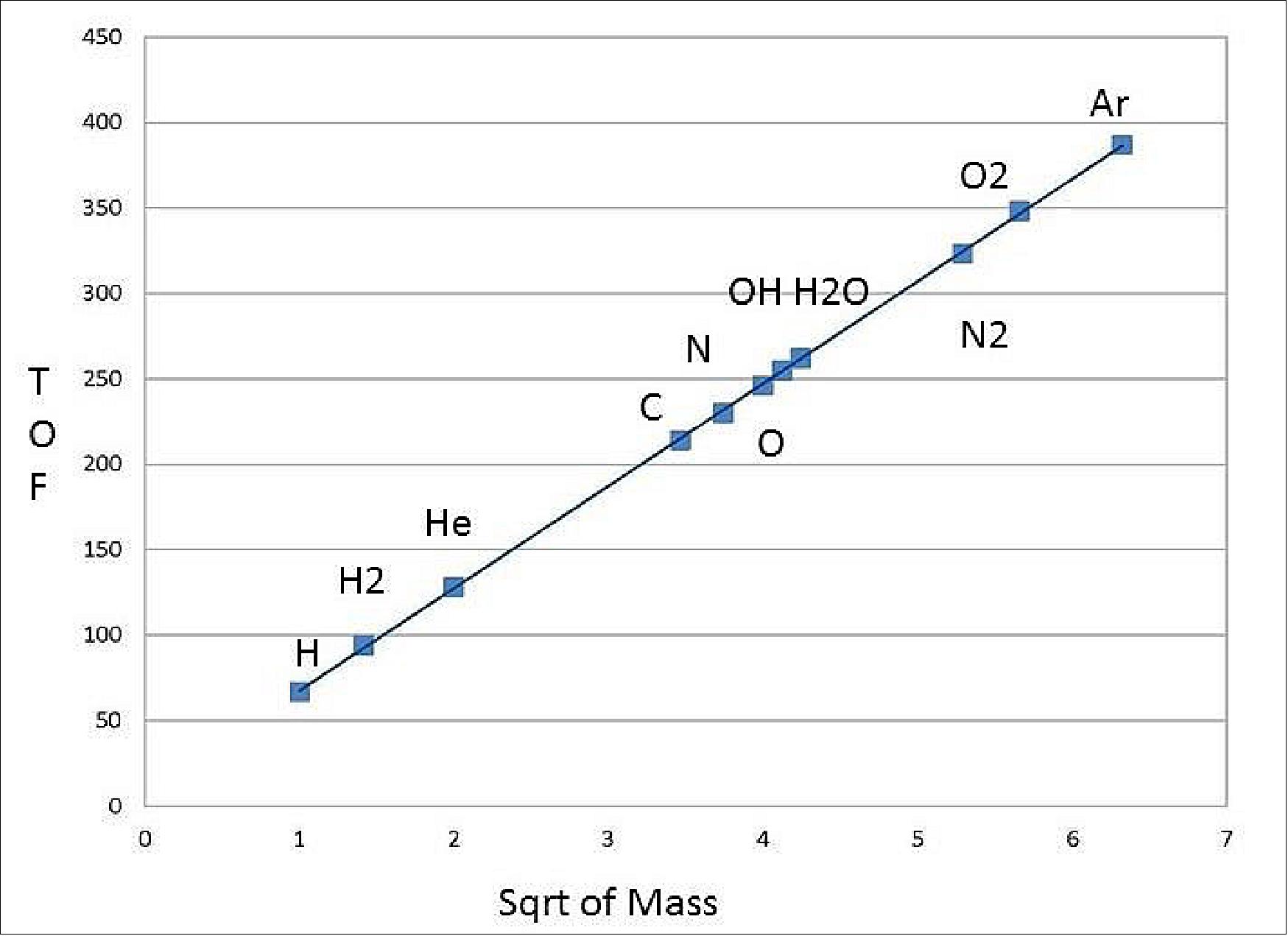
References
1) Lori Keesey, Lynn Jenner, ”NASA CubeSat Mission to Gather Vital Space Weather Data,” NASA Feature, 7 May 2020, URL: https://www.nasa.gov/feature/goddard/2020/nasa-cubesat-mission-to-gather-vital-space-weather-data/
2) ”Pathfinding CubeSat Mission to Pick Up Where Dynamics Explorer Left Off,” NASA Cutting Edge, Volume 16, Issue 3, Spring 2020, pp: 13-14, URL: https://www.nasa.gov/sites/default/files/atoms/files/spring_2020_final_web_version_0.pdf
3) ”SmallSat Missions @ GoddardDione,” NASA Goddard, 2022, URL: https://smallsat.wff.nasa.gov/missions/dione.php
4) Marcello Rodriguez, Nick Paschalidis, Sarah Jones, Ed Sittler, Dennis Chornay, Paulo Uribe, Tim Cameron, Bobby Nanan, ”A compact Ion and Neutral Mass Spectrometer for CubeSat/SmallSat Platforms,” Proceedings of the 29th Annual AIAA/USU Conference on Small Satellites, Logan, Utah, USA, August 8-13, 2015, URL: http://digitalcommons.usu.edu/cgi/viewcontent.cgi?article=3268&context=smallsat